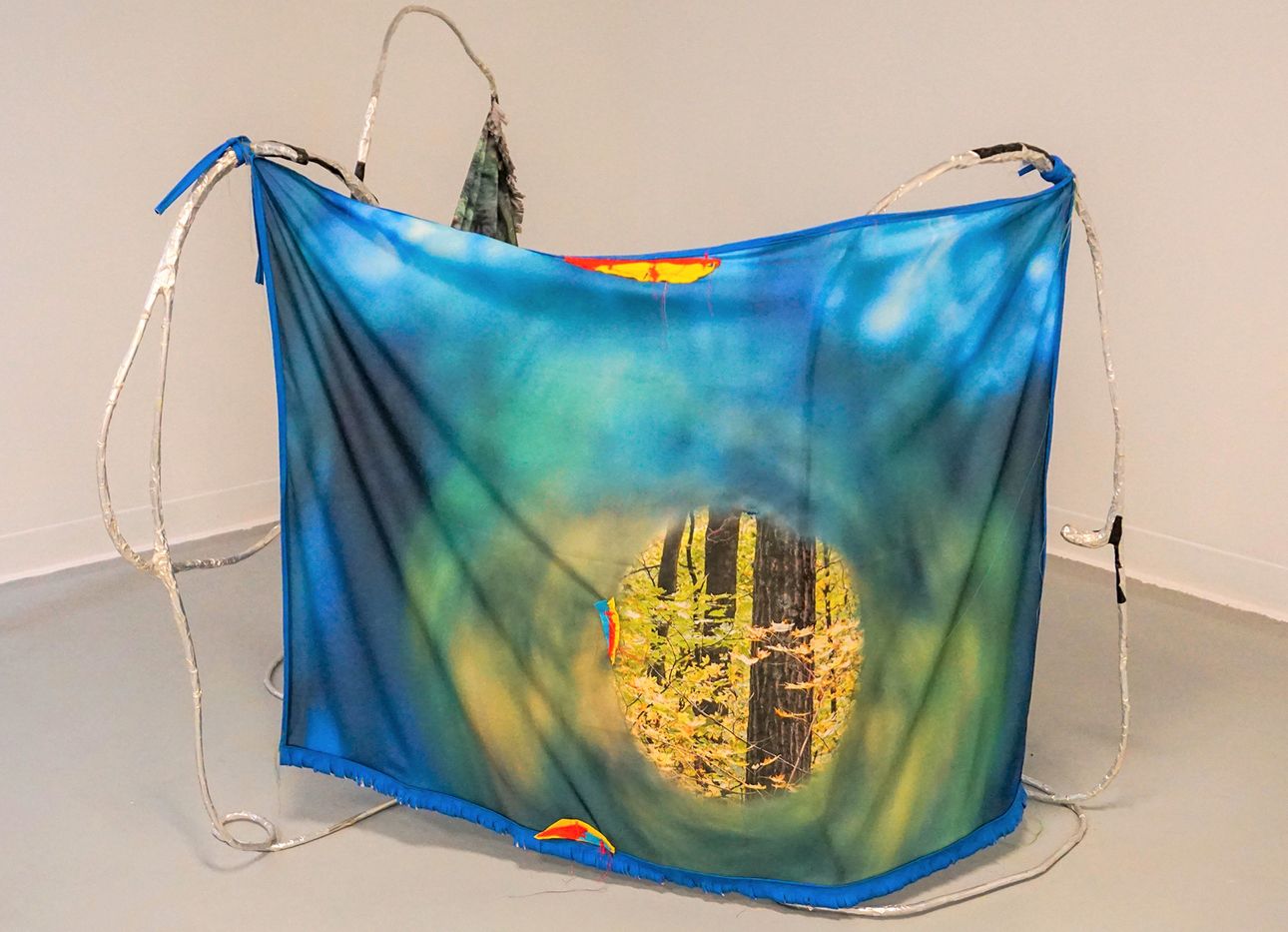
In Wisconsin, an Exhibition of Analog Art Shaped by Digital Themes
In his 1982 book Megatrends: Ten New Directions Transforming Our Lives, the late futurist John Naisbitt predicted that people employed by technology companies would crave real-world social connections with others—a phenomenon he called “high tech/high touch.” The best response to an increasingly digital, impersonal world, he believed, wasn’t resistance to it, but considering it from a human point of view.
His thinking rings through the John Michael Kohler Arts Center (JMKAC)’s current exhibition, “High Touch” (on view through March 13, 2022), which spotlights six artists who use technology as a medium, inspiration, or tool to create intimate, intelligently constructed objects. (Underlining its commitment to skilled makers, the Sheboygan, Wisconsin–based institution today opens a satellite campus, called the Art Preserve, dedicated to conserving art environments: homes, yards, and other spaces that creatives have transformed into multifaceted works of art.) Standouts in the show include the works of Danielle Andress, who incorporates images of rapidly circulated memes and stock photos into the slow process of weaving, and Conrad Bakker’s hand-carved and -painted wood sculptures—including a replica of a mangled store sign from the defunct video-rental chain Blockbuster—that consider the relationship between people, corporations, and pop culture. In one room, Melissa Pokorny’s series of strange mixed-media assemblages, featuring textiles printed with digital photographs and supported by aluminum wire, reflect on the role of place (experienced in real life or online, presumably) in structuring memory and identity.
The works also exemplify what the show refers to as “high-touch art,” or pieces that, when observed up close and in person, intensify sensory awareness through texture, scale, and mass. In today’s digital-centric context, it seems that the term could be applied to most physical art-viewing experiences. “In our hyper-mediated, screen-based existence, when true presence is often elusive, real-world encounters with artworks provide an antidote to the flattened experience of digital life,” JMKAC senior curator Kaytie Johnson said in a statement. “Situated where craft and technology intersect, where materials end and sensation begins, ‘High Touch’ reminds us of the radical, transformative power of art, and of art’s ability to touch us.”